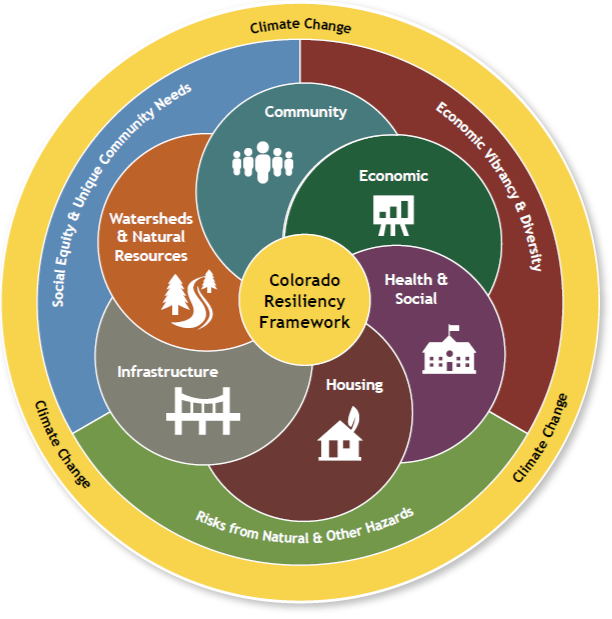Activity 3: Identify Your Advisory Committee
Purpose
In this activity, the core planning team will determine its approach to engaging with subject matter experts, community advisors, and technical advisors throughout the project.
Why?
Resilience planning takes a “village.” It requires strategic input, buy-in, and support from local, regional, state, and federal public and private partners. It also requires a multi-disciplinary, locally-driven, and cross-sectoral approach. Having the right people at the table from the beginning is essential. These people can also help ensure that the outreach, engagement, and community involvement are central to the project and are done in an effective, equitable, and meaningful way (see Activity 4).
When?
The advisory committee should be formulated after the core team is established and should be identified within the first 1-2 months of the planning process. Engagement with the advisory committee will happen at strategic points throughout the life of the project.
Tips
- Tailor your approach based on need. Tailor the formality, available resources, and method of engaging with advisory committee members based on the specific needs of individuals in the group. In some cases, this may mean providing a stipend for individuals’ expertise or support who are not already being paid by an employer, providing childcare, or scheduling the locations of meetings in places that accommodate everyone’s needs.
- Communicate with intention. Use consistent, inclusive, equitable, and transparent communication throughout the process. Also, see the APA Planning for Equity Policy Guide.
- Expand outward. Avoid the tendency to only appoint people to the advisory committee that you are already familiar with. Identify individuals that will support the process.
How does my community do this?

- Map the stakeholders relevant to your project and resilience planning process. This includes your core team (activity 2), your advisory committee (activity 3), and potential stakeholders (activity 4). Consider each group's general interest, influence, expertise as well as potential challenge areas in communicating or engaging with them. Take a look at the Stakeholder Mapping Template in the workbook for additional guidance.
- Identify advisory committee members. Community Readiness and Resilience Toolkit Workbook - Planning Team Worksheet Tab - Template Button. An advisory committee consists of 12-18 individuals who will be involved at key stages of the planning process (See the Climate Ready Communities Guide to Building Climate Resilience pages 9-23). They will not be involved in day-to-day operations but will be a valuable collection of advisors that will help guide the development of the plan. Consider advisory committee members across all six of the sectors identified in the 2020 update to the Colorado Resiliency Framework (page 9): 1) Community; 2) Economic; 3) Health and Social; 4) Housing; 5) Infrastructure; and 6) Watersheds and Natural Resources.
- Be clear about roles and expectations for your advisory committee. Before you solicit participation from individuals to be a part of the advisory committee, be sure you’ve outlined a clear “ask” to be included in their invitation. Each advisory committee member should be willing to commit at least 50-60 hours over 12-16 months in a variety of forums including workshops, meetings, and individual review efforts (i.e. provide feedback and edits to the plan at key stages in the development or update of a plan). In addition to interest and willingness to participate, consider the following criteria for committee members:
- Availability and capacity;
- Knowledge of climate change and planning processes;
- Time, connectedness, and experience in the community;
- Job position and organizational affiliation; and,
- Representative of a diverse cross-section of the community.
